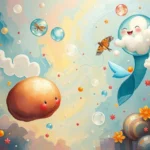
Dreams have long fascinated humanity, serving as a bridge between our waking lives and the deeper recesses of our subconscious. They can illuminate our fears, desires, and unresolved conflicts, often through vivid symbols and scenarios that resonate with our daily experiences. The study of dreams—known as oneirology—invites us to explore the hidden meanings behind our nighttime narratives. As we delve into the symbolism of dreams, we begin to uncover the profound relevance they hold in our daily lives, prompting us to reflect on our experiences, relationships, and emotions.
In this article, we will analyze common symbols found in dreams, explore variations in dream scenarios, and provide insights on how these dreams can connect to our real lives. By understanding these elements, we can unlock the wisdom our dreams offer.
Symbolism and Meaning
Dream symbols can vary widely, but many common themes tend to emerge across different cultures and personal experiences. Symbols in dreams often serve as metaphors for our thoughts, feelings, and situations we encounter in our waking lives. For instance, water is a frequent symbol that can represent emotions, intuition, and the subconscious. The state of the water—calm, turbulent, or murky—can provide insight into how we are processing our emotions in reality.
Another prevalent symbol is flight. Dreaming of flying can evoke feelings of freedom and liberation, suggesting that the dreamer is overcoming obstacles or rising above problems. Conversely, if the flight is accompanied by a sense of fear or inability to gain altitude, it may indicate a struggle with control or feelings of insecurity in one’s life.
Houses often appear in dreams as well, representing the self and different aspects of our personality. The various rooms can symbolize different facets of our lives, such as work, relationships, and personal growth. Exploring a new room in a dream may signify the discovery of new traits or experiences in yourself, while locked doors may represent opportunities or feelings that are currently inaccessible.
Beyond these common symbols, dreams can also reflect our social interactions and relationships. Dreaming about a friend or family member can indicate how we feel about that relationship or aspects of ourselves that are reflected in them. For example, dreaming of a supportive friend may suggest that you are embracing positivity, while a conflict with a loved one in a dream might highlight unresolved tensions in the waking world.
From a psychological perspective, Carl Jung emphasized the importance of archetypes—universal symbols that resonate across cultures. Jung believed that recognizing these archetypes in our dreams could lead to greater self-awareness and healing.
In contrast, Sigmund Freud focused on the idea of repression, suggesting that dreams serve as a means for the subconscious to express desires that are not socially acceptable. Understanding these differing viewpoints can enrich our interpretations of dream symbols, allowing for a more nuanced exploration of their meanings.
Key Scenarios and Variations
Dreams are not one-size-fits-all; they can manifest in myriad scenarios, each carrying its own unique implications. For instance, a recurring dream may point to unresolved issues or persistent feelings in your waking life. If you frequently dream of being chased, it could indicate that you are avoiding a situation or feeling overwhelmed by stress. On the other hand, if you dream of confronting what is chasing you, it might signify a readiness to face your fears.
Nightmares, too, are rich in symbolism. They often reveal anxieties or emotional distress. A nightmare about falling may reflect feelings of inadequacy or loss of control, while one about being trapped could indicate feelings of entrapment in a relationship or job. Conversely, a lucid dream—where the dreamer is aware they are dreaming—can empower individuals to confront their fears or explore their desires in a safe environment.
Another interesting variation is the presence of animals in dreams. Animals often symbolize instincts or aspects of our personality. For instance, dreaming of a lion can signify courage or assertiveness, while a snake may represent hidden fears or transformation. The context in which the animal appears—whether it’s friendly, aggressive, or indifferent—can significantly influence the interpretation.
Cultural factors also play a significant role in dream variations. For instance, in some cultures, dreaming of ancestors may signify guidance or wisdom. In contrast, in others, it may reflect a need to reconnect with one’s roots or heritage. Recognizing these cultural nuances can deepen our understanding of our dreams.
Ultimately, the interpretation of dreams often hinges on the dreamer’s personal experiences and emotions. A scenario that feels frightening for one person might evoke a sense of adventure in another. Thus, it’s essential to consider the emotions and thoughts that arise during and after the dream to arrive at a meaningful interpretation.
Real-Life Connections and Takeaways
Connecting dreams to our everyday lives can be a powerful tool for self-reflection and growth. Start by keeping a dream journal to document your dreams upon waking. Jot down any symbols, emotions, and memorable scenarios. Over time, patterns may emerge that reveal insights into your waking concerns and aspirations.
Consider how the emotions you experience in your dreams echo your daily life. For instance, if you frequently dream about being late for an important event, reflect on whether you feel rushed or unprepared in your waking life. This could highlight areas where you may need to focus on time management or self-care.
Additionally, engaging in self-reflection can help you uncover the lessons your dreams offer. Ask yourself questions such as, “What does this dream reveal about my current challenges?” or “How does this symbol relate to my feelings about a specific situation?” This introspective approach can lead to greater self-awareness and clarity.
Don’t shy away from exploring your emotions, even if they feel uncomfortable. Dreams often bring unresolved feelings to the surface, inviting you to confront and process them. If you find yourself dreaming about a difficult relationship, consider whether there are unresolved feelings or conversations that need to take place in your waking life.
It’s also beneficial to practice mindfulness and meditation. These practices can enhance your awareness of your thoughts and feelings, creating a deeper connection to your dreams. As you become more attuned to your inner world, you may find that your dreams become richer and more meaningful.
Finally, remember that the ultimate interpretation of your dreams lies within you. While there are common symbols and themes, your personal experiences, emotions, and cultural background significantly shape your dream landscape. Allow your intuition to guide you as you reflect on your dreams, and don’t hesitate to seek the help of a therapist or dream analyst if you feel overwhelmed or intrigued by a particular dream.
In conclusion, dreams serve as a profound reflection of our inner selves and the complexities of daily life. By examining the symbols, exploring variations, and connecting them to our waking experiences, we can unlock valuable insights that promote personal growth and emotional healing. Your dreams are a canvas painted by your subconscious; take the time to explore them, and you may discover a treasure trove of wisdom waiting to be unveiled.







